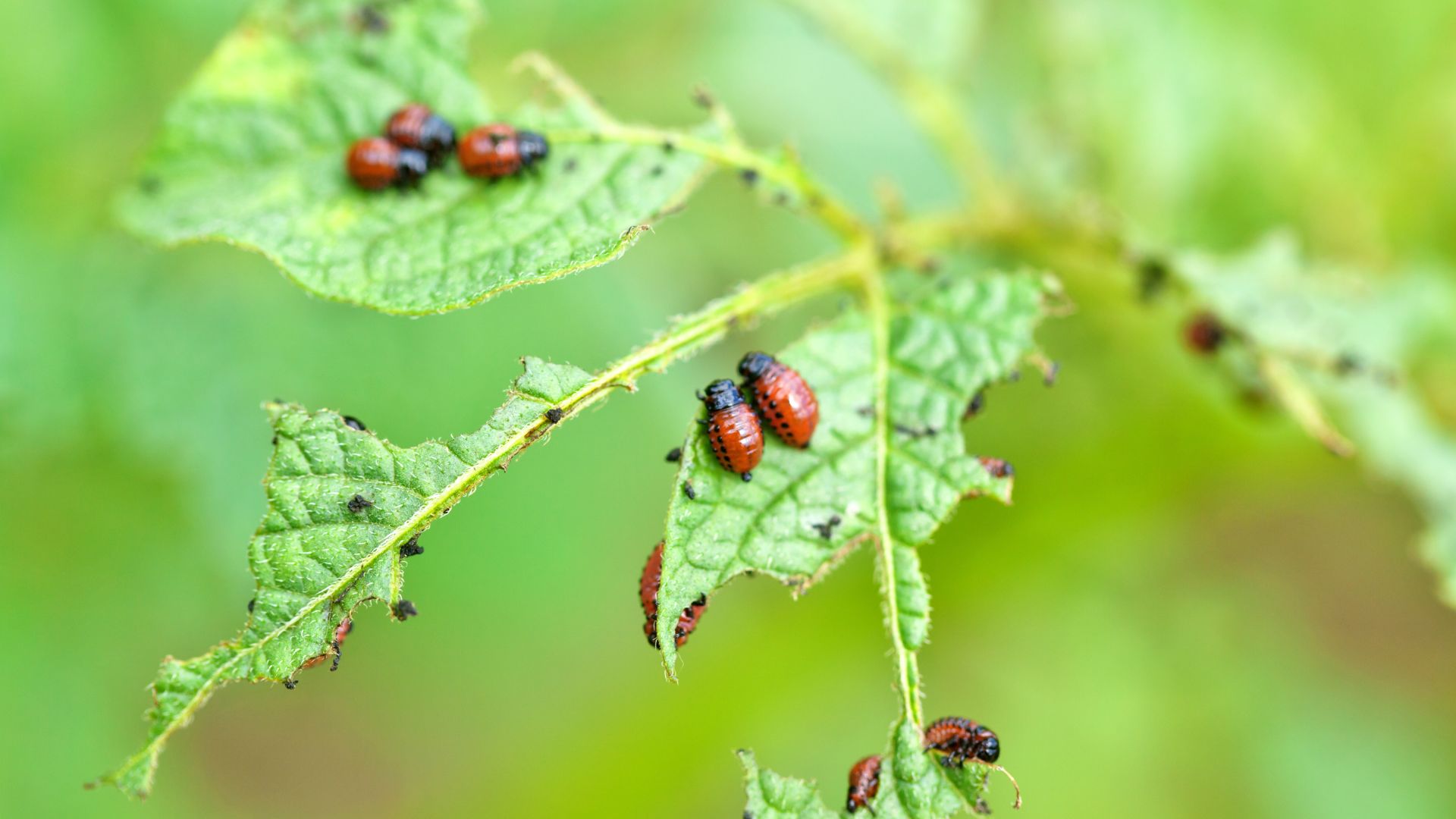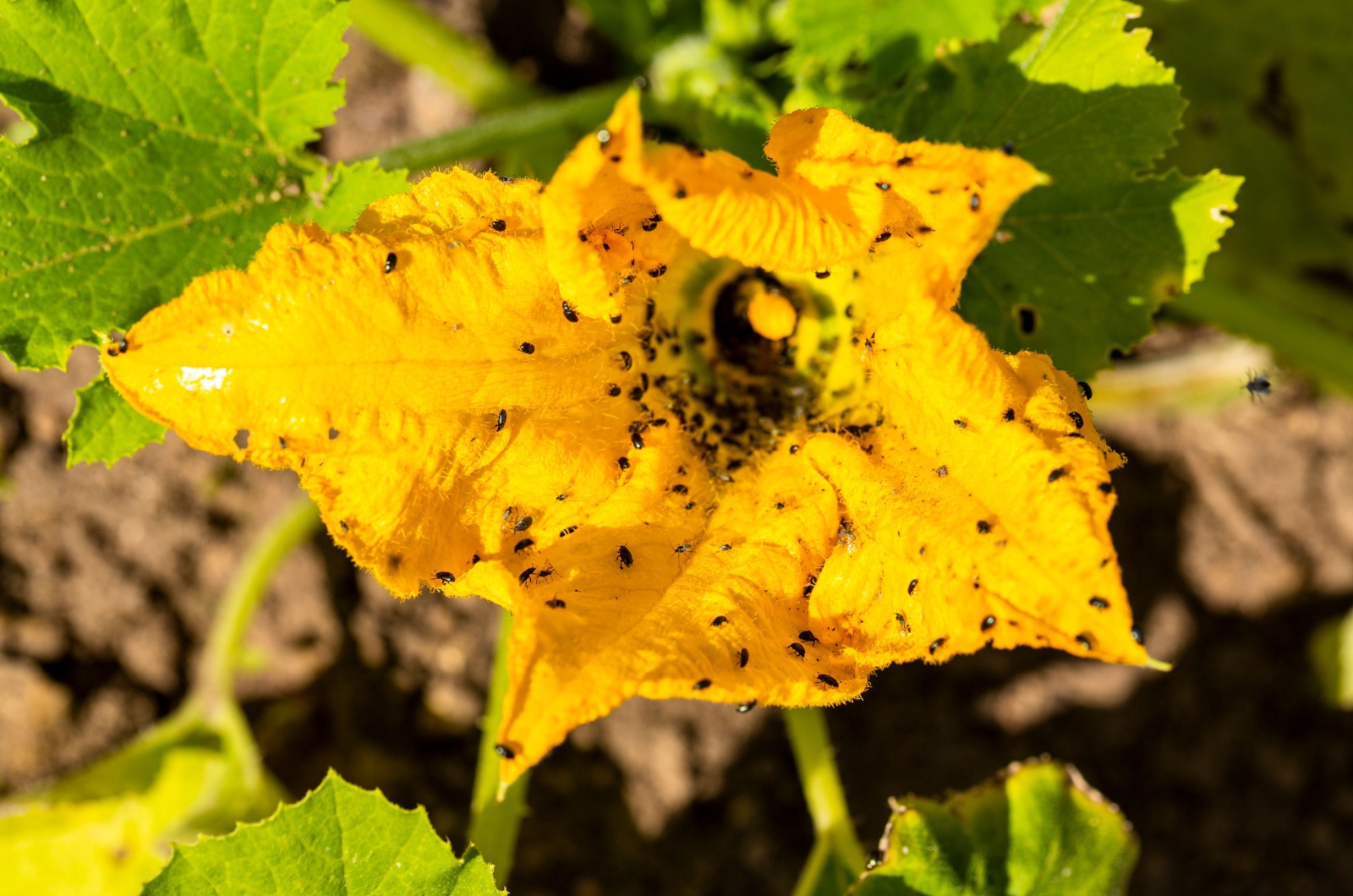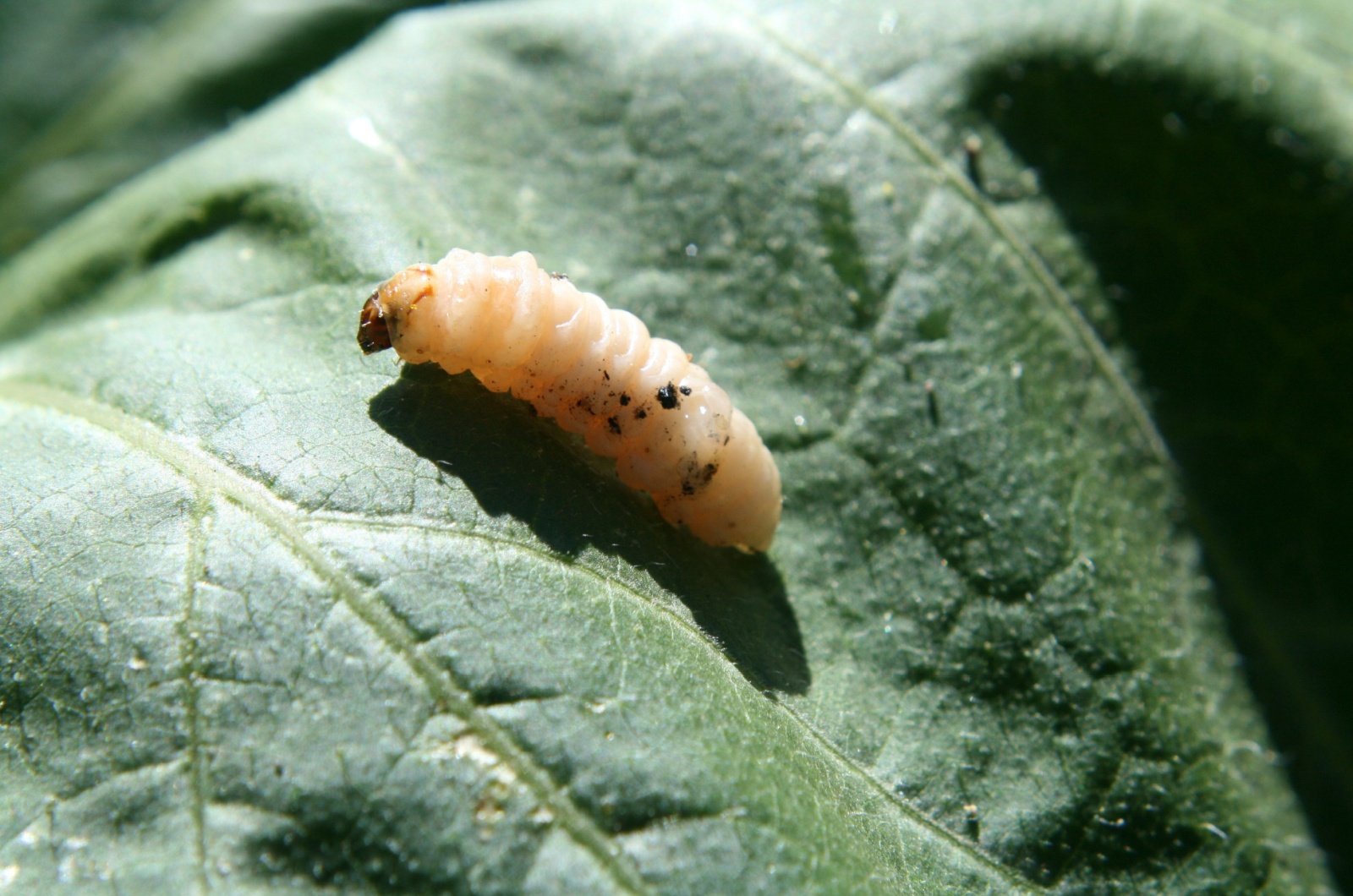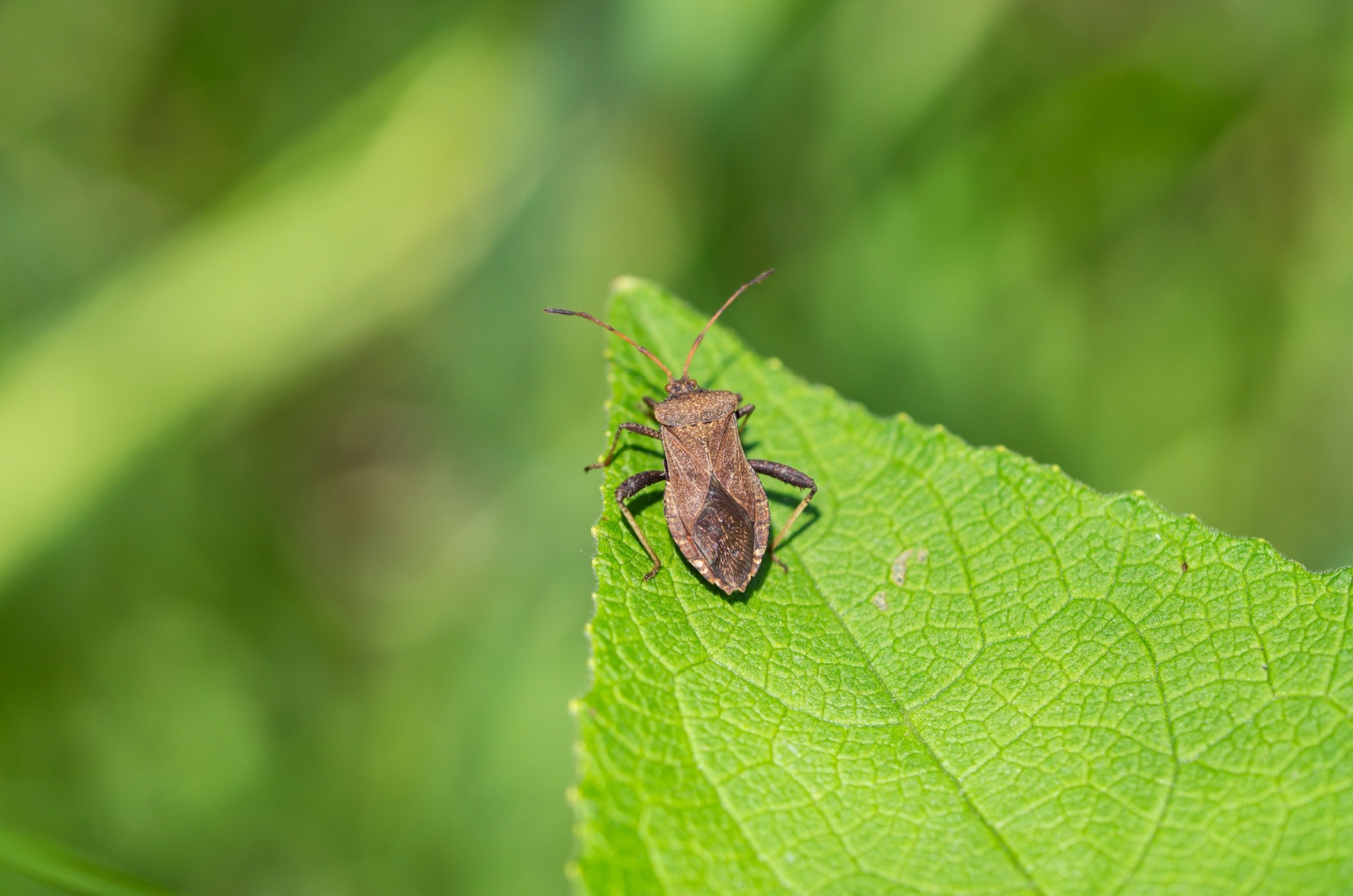I adore zucchini, but I never knew that they’d attract so much trouble!
I prepped the soil and planted my zucchini, took good care of it, and still ended up with almost nothing to harvest. What could’ve possibly gone wrong?
The answer is pests. Although they’re super tiny, these critters can do huge damage to your plants right before your eyes (sneaky!).
What made a huge difference for my zukes was knowing what they were and how to get rid of them.
So here, I’ll share with you the most common zucchini pests and some advice on keeping them far away from your precious crops.
1. Aphids Love Everything, Especially Zucchinis
Of course aphids are first…
These are one of the most notorious pests in a vegetable garden, and zucchini is definitely on their hit list. These little sap-suckers breed like crazy, draining your plants while spreading diseases from one to another.
If you notice yellowing leaves or a swarm of ants on your zucchini, it’s a good sign aphids are there (the ants love the sticky honeydew aphids leave behind).
So, how can you get rid of them?
The easiest option would be buying insecticidal soap or using neem oil. You can even try making your own aphid spray, like soapy water or garlic spray, or dusting your plants with diatomaceous earth.
Related: This Simple Ingredient Can Protect Your Plants From Aphids
2. Stink Bugs Will Stink Up Your Zukes
Stink bugs definitely live up to their name.
These pests release a strong, coriander-like smell when disturbed (and it’s not pleasant at all).
If you are familiar with squash bugs (if not, you will be soon), stink bugs actually look like shield-shaped versions of squash bugs and can be green or brown.
Stink bugs damage zucchini by sucking the sap and leaving small holes with yellow halos around them, which turn the fruit mushy and rotten.
They’re pretty easy to spot, so you can pick them off by hand. Or, try planting marigolds, nasturtiums, garlic, or catnip around your zucchini to naturally repel them.
You can also attract helpful insects like lacewings, spiders, and parasitic wasps, which love snacking on stink bugs.
Related: I Was Overwhelmed By Stink Bugs Until I Tried This Essential Oil (Here’s How It Worked)
3. Squash Vine Borers Can Destroy Your Plants
Squash vine borers can be a real headache for zucchini growers.
These sneaky caterpillars burrow into the stems of your zucchini plants and munch away for up to six weeks, which eventually leads to wilting and death if left unchecked.
If you notice yellowing plants, wilting sections, or frass at the base, the most likely culprits are squash vine borers.
You can manually remove the borers by carefully slicing open the stem or cutting off the affected part of the plant. Covering young crops or using organic insecticides like Bacillus thuringiensis (Bt) can also help.
What helped my zucchinis most is crop rotation – you basically move your zucchini plants as far away from last year’s spot as possible, making it harder for the borers (and other pests) to find them.
4. Cucumber Beetles Don’t Limit Themselves To Cucumbers
Turns out, those cucumber beetles aren’t all about cucumbers – they also like to munch on pumpkins, squash, and zucchini!
These pests, with their greenish-yellow bodies and black spots or stripes, can cause more than just physical damage. They spread cucumber mosaic virus and bacterial wilt while chewing holes in leaves and flowers.
To protect your plants, try using row covers when you first plant zucchini, but remember to take them off once flowers appear. Adding a thick layer of mulch around the base can also make it harder for these beetles to lay eggs in the soil.
A little strategic companion planting can make a big difference, too. Dill attracts parasitic wasps, which hunt cucumber beetles, while marigolds and nasturtiums are natural beetle repellents.
If you do see cucumber beetles hanging around, you can handpick them into a bucket of soapy water or give your plants a neem oil spray.
5. Distorted Fruit Can Be Caused By Squash Bugs
Squash bugs are another nightmare for your zucchinis.
The adults are flat and dark gray or brown, while their younglings (nymphs) have a greenish-gray look. They love laying their eggs under the leaves, and their feeding habits can leave your plants with white-speckled leaves, wilting, stunted growth, and even distorted fruit.
However, you can hand-pick those adult bugs and toss them into soapy water. Planting flowers in your garden is also a good option because they attract natural predators to deal with pests.
Clearing away plant debris at the end of the season helps too, as it removes potential hiding spots for overwintering squash bugs.
Always inspect your plants for signs of trouble. Identifying these signs helps you figure out the pest and the best method to tackle it.
With the right approach, your zucchinis will keep thriving and improving!
Related: These 10 Pest-Repellent Plants Will Keep Bugs Away From Your Yard






